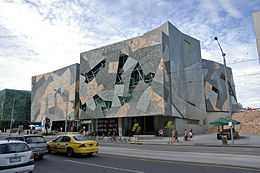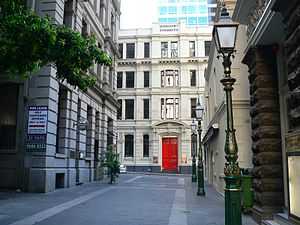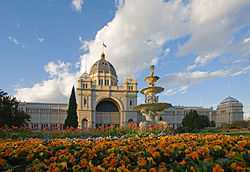Architecture of Melbourne
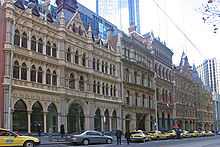

The architecture of Melbourne, the second largest city in Australia, is characterised by an extensive juxtaposition of old and new architecture. The city is noted for preserving a significant amount of Victorian architecture and has some of the largest in the country. Additionally, it features a vast array of modern architecture, with around 60 skyscrapers over 100m in the city centre which have deliberately been set back from thoroughfares and streets to preserve historic architecture—leading to the title of "Australia's most European city".
The juxtaposition of old and new has given Melbourne a reputation as a city of no characterising architectural style, but rather an accumulation of buildings dating from the present back until the European settlement of Australia. The city is also home to Eureka Tower (2006), which was the tallest residential tower when measured to its highest floor for some time.[1]
Skyscrapers
Despite the city's historic preservation, Melbourne features a large collection of high-rise buildings. To counter the trend towards low-density suburban residential growth, the government began a series of controversial public housing projects in the inner city by the Housing Commission of Victoria, which resulted in demolition of many neighbourhoods and a proliferation of high-rise towers.[2] Furthermore, Australia's financial and mining booms between 1969 and 1970 resulted in establishment of the headquarters of many major companies in the city and saw a continual rise in large, modern office buildings being constructed, putting Melbourne on par with Sydney which underwent a skyscraper boom in the late 1960s and 70s.
Melbourne has some fairly tall buildings especially when compared to some of Australia's other capital cities. The late 80s and early 90s saw five of some Melbourne's tallest buildings constructed; Rialto Towers (1986)—the tallest office building in the Southern Hemisphere when measured to its roof, 120 Collins Street, 101 Collins Street, Bourke Place and Melbourne Central (all 1991) all of which stood over 245 meters high. Other Australian buildings when measured to their spire reach taller heights, however. The 2000s saw a continuation of skyscrapers and tall buildings with the urban renewal opening of the Melbourne Docklands in 2000 and the construction of Eureka Tower, an apartment building which is currently Melbourne's tallest and the 77th tallest in the world at 92 floors and 297 metres.[3] The glass style building was constructed by Fender Katsalidis Architects.
Firms like BKK Architects are breaking ground designing the thinnest tower in Melbourne.
Gallery
-
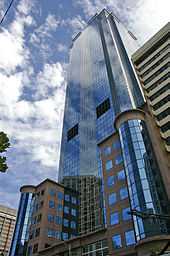
530 Collins Street
-

A.C Goode House (1891)
-

Safe Deposit Building
-

Alstons Building
-

Eureka Tower, Melbourne's tallest building
-

St Paul's Cathedral, contrasted by modern office buildings
-

Parliament House Melbourne
-

Scots Church
-

Rialto Towers
-

Crown Towers Hotel
-

Gothic and Victorian buildings on Collins Street
-
Fitzroy Town Hall
-
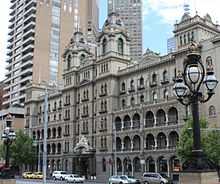
Windsor Hotel
-

Old Rialto Buildings
-

Winfield Building
-

Stalbridge Chambers (1889)
-
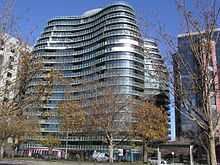
Apartments in St Kilda
-
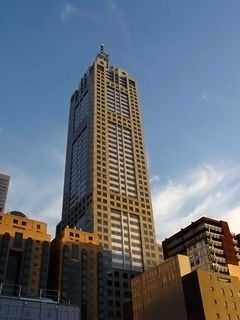
120 Collins Street
-

Melbourne Hyatt Hotel
-

Top of the Manchester Unity Building and the clock tower of the Melbourne Town Hall
See also
- Architecture of Australia
- List of heritage listed buildings in Melbourne
- List of tallest buildings in Melbourne
- Victorian architecture
References
- ↑ "100 Tallest Residential Buildings in the World". Council on Tall Buildings and Urban Habitat. Retrieved 3 May 2012.
- ↑ William, Logan (1985). The Gentrification of inner Melbourne: a political geography of inner city housing. Brisbane, Queensland: University of Queensland Press. pp. 148–160. ISBN 0-7022-1729-8.
- ↑ "Eureka Sky Deck". Retrieved 15 July 2012.
| |||||||||||||||||||||||||||||||||||
